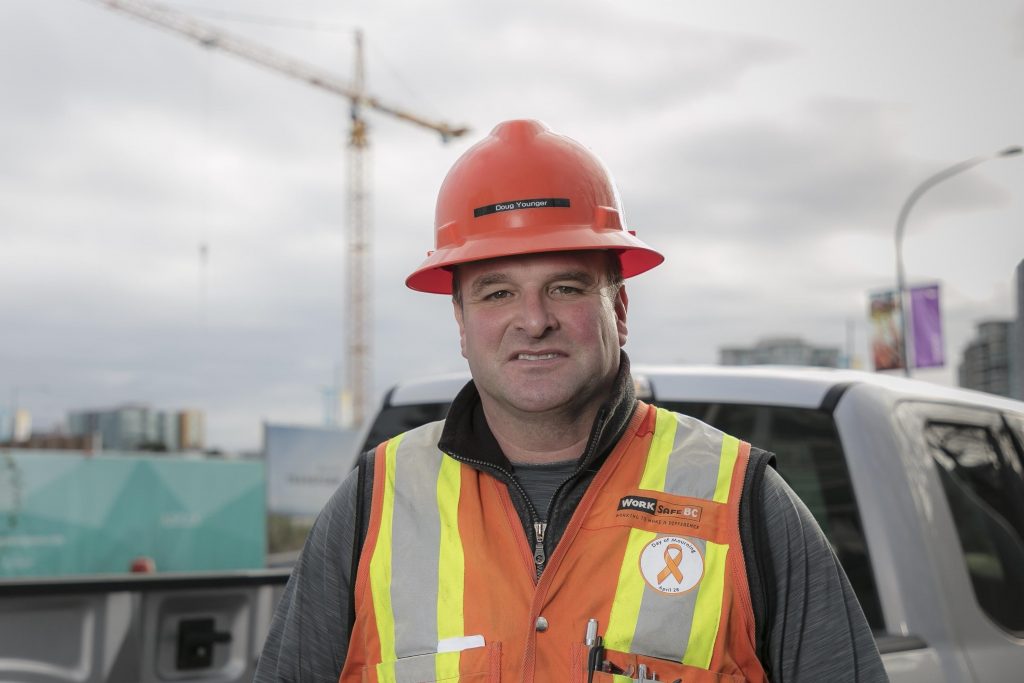
Features
Safety & Risk Management
Recognizing the benefits of anti-collision devices and zoning technology
September 18, 2018 By Doug Younger WorkSafeBC
 Doug Younger
Doug Younger It should come as no surprise to anyone in this industry that the second most common type of serious tower-crane incident reported to WorkSafeBC in the last decade relates to contact with overhead power lines. Unwanted contacts – between two cranes or between tower cranes and power lines – have caused 15 reported close calls in B.C. since 2015 alone, and that number doesn’t account for all those potentially disastrous incidents that have gone unreported.
While none of these reported incidents resulted in injury or death, several caused temporary power outages for thousands of nearby businesses and homes, many resulted in lost time or materials and damage to costly machinery, and all 15 had the potential for serious injury, death, or catastrophic equipment failure. As per the regulatory requirement, tower cranes and ancillary equipment involved in the incidents all had to be inspected, repaired if necessary and re-certified for use.
This statistic has helped guide WorkSafeBC’s provincial crane inspection team in developing its three-year Tower Crane Strategy, one element of which is a focus on raising awareness of the value of digital zoning and anti-collision devices. Slew-limiting technologies have advanced steadily over the last 20 years. Sensors, interfaces and the software used to analyze the data have become very reliable, making the benefits for safe and efficient operation indisputable.
This advancement in technology is leading a trend that is seeing manufacturers install these devices as original equipment. Additionally, aftermarket systems are available to tower-crane owners that can be retrofitted onto older cranes by qualified firms.
Worldwide, anti-collision technology is increasingly being treated as compulsory. In California and France, its use on tower cranes has been mandated by law for years, and the rest of Europe will introduce similar requirements in 2019.
In B.C., the technology is becoming more common and is frequently an option on new cranes. The obvious benefits of these systems make it worthwhile for industry to explore retrofitting older equipment wherever possible.
Ultimately, when employers use qualified, experienced operators, combined with safe-work procedures and the technology of the anti-collision devices, they should be able to effectively mitigate risks to workers and improve a worksite’s efficiency and productivity at the same time. By taking this approach, especially when it comes to complex, multi-tower crane installations, the construction industry should feel more confident about avoiding costly and possibly deadly incidents.
To encourage employers in this direction, WorkSafeBC has revised Guideline 19.24.1 – which describes the minimum approach distance to electrical conductors – accordingly. Typically, where the minimum required distances between equipment and conductors cannot be maintained for any reason, an employer must provide written assurance that certain safeguards are in place, detailed in the guideline. With this change, operations that use a zone-limiting device to prevent such contacts are now exempted from the need to provide assurance in writing.
The relevant section now reads:
In cases where possible or theoretical movement of a piece of equipment into the minimum approach distance is prevented by a system such as a zone limiting device, section 19.25 does not apply and an assurance in writing is not required.
For instance, a tower crane may be positioned so that it is possible for the load line of the tower crane to travel within the limits of approach of a high voltage distribution line. However, the owner of the tower crane may put systems in place that prevent the tower crane from operating in an area that is in violation of the required limits of approach. In that case, section 19.25 does not apply and an assurance in writing is not required.
For additional resources on crane safety, please visit worksafebc.com.
Doug Younger is an occupational safety officer and member of the Provincial Crane Inspection Team for WorkSafeBC.
Print this page